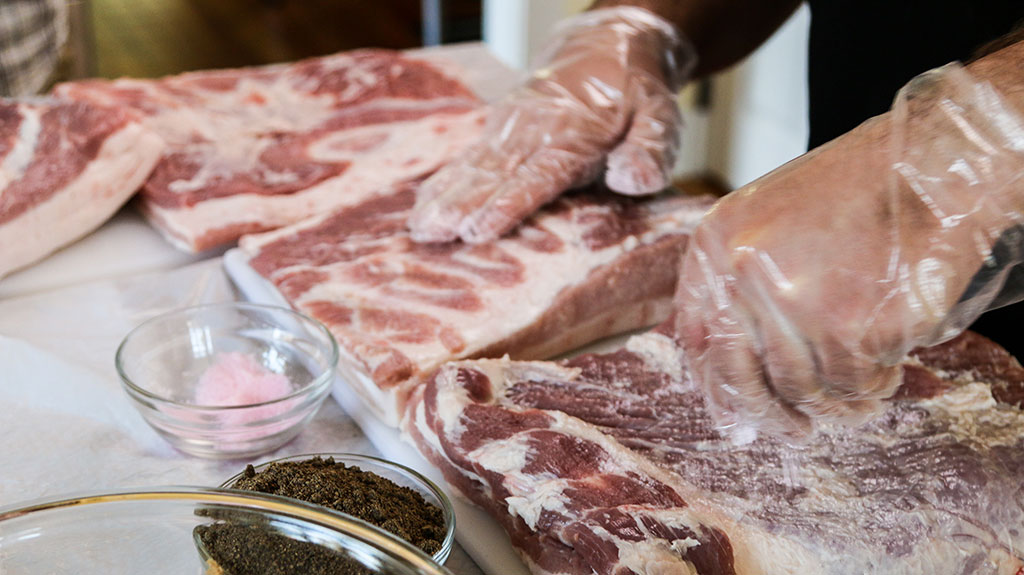

The 7th rule of Meat Club is “Don’t kill anyone”. We know that’s a bit harsh, but we wanted to get your attention.
Improper cooking and cleaning methods could put a friend or family member in the hospital, or maybe just cause them to camp out on the toilet seat for a couple days. Things like that will put a real damper on your meat club, to say the least. Here are some tips to make sure your peeps will continue to want to, ahem, eat your meat.
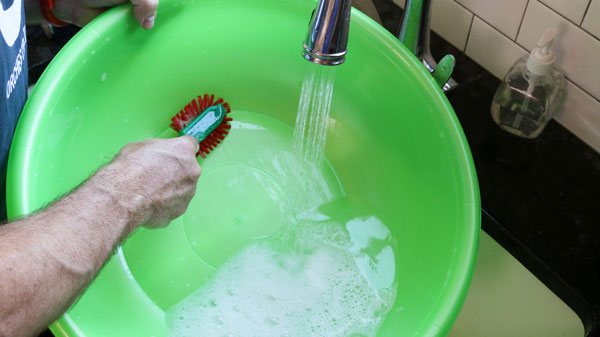
Foodborne illnesses like Hepatitis A and the Norovirus are most easily prevented by a simple scrub-a-dub-dub of your paws. Wash your hands before getting to work, after touching any raw meat, and especially after using the restroom. Use soap and warm water (at least 100°F / 38°C), briskly rub your hands together beneath running water for 15 seconds, and dry them with a sanitary disposable towel.
At New Seasons Market in Portland, Oregon, the butcher department tells its employees to wash their hands long enough to sing Happy Birthday to Me. At Meat Club, we sing Happy Bacon to Me when washing our hands.
Making sure your food preparation surfaces and utensils are tip-top before throwing down is just as important. Wash your knives and cutting boards before and after every use with dish soap and warm water (at least 100°F / 38°C). And use a bleach solution of 1 part bleach to 10 parts water to sanitize your meat grinder, sausage stuffer, and work surface to help kill bacteria like Escherichia coli, Salmonella and Staphylococcus.
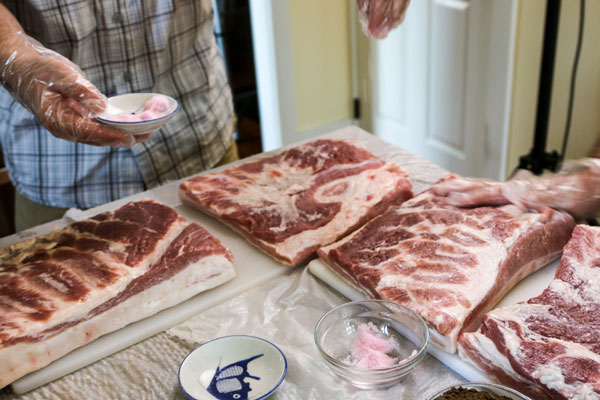
Nitrites need to be added any time you dry-cure or smoke a meat, because you will be smoking the meat between 40°F / 4°C and 140°F / 60°C, which is the range of temperatures in which harmful bacteria multiply. You'll need to use a table salt mixed with sodium nitrate called Instacure #1, commonly known as pink salt, when making smoked meats such as Andouille, Bacon, Hot Dogs, Kielbasa, Linguiça, and Pastrami, in order to prevent bacteria such as Clostridium botulinum from infecting the meat.
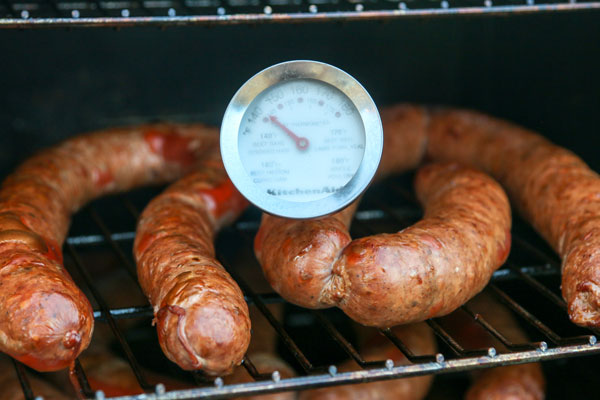
Sometimes, albeit seldom, the pork or beef that you purchase will arrive infected with the larvae of a species of roundworm called the trichina worm, or bacteria called Salmonella or Escherichia coli. If you don’t take proper take care of your meat, you could infect someone with trichinosis, salmonellosis, or E. coli. They could find themselves with a white-knuckled grip on those handicap handlebars in their restroom, both forwards and backwards, if you catch our proverbial drift. Hospitalization occurs in some cases, and death, Hermes forbid, in just a few cases every year.
Fear not, grasshopper. You can kill those little bacterial and wormy bitches by cooking your pork and beef until it reaches an internal temperature of 145°F / 63°C.
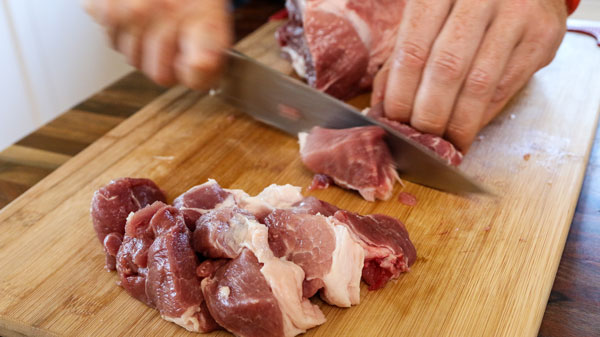
Ryan put himself in the emergency room once thanks to a bread knife and some stupidity. He tried to open up a coconut with a bread knife by sawing the top off the coconut with the blade facing towards him. The knife slipped and opened up a huge gash in his thumb, which bled like a mofo and required 7 stitches. "And for my Darwin Award, I'd like to thank...", he says part sarcastically and part seriously...
Here are a few tips to help you not be a dumbass like Ryan:
Keep your knives sharp. Dull knives cause imprecise cuts, and you'd rather cut straight through that pork shoulder instead of partially through the pork shoulder and partially through your finger. Sharpen your knives regularly on a wet stone or steel. Applying gentle pressure, run the blade slowly down the wet stone or steel at a 25° angle. Once it's sharp, keep it sharp, by storing it on a wall magnet or in protective knife sleeves. And only hand-wash your blades; dishwashers will blunt your blades.
Always cut on a stable surface. If your cutting board or the surface it's placed upon isn't even, dampen a cloth and place it beneath the cutting board to help it stay in place.
Hold the item you're cutting firmly with one hand, but tuck your fingers in so they're not sticking out when you bring the blade down. Chop and slice away from your body, and at an angle where the knife is pointed away from your fingers.
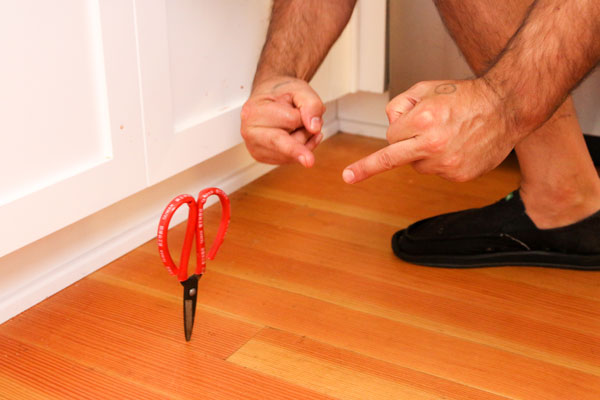
Keep a first aid kit on hand, and make sure your emergency safety numbers are written down, just in case. You probably won’t need them, but we all know that it’s better to be safe than to be sorry. After all, you never know when a knife or a sharp pair of scissors is going to jump off the counter and try to attack your feet, like when they tried to attack Dietrich's feet, those assholes.